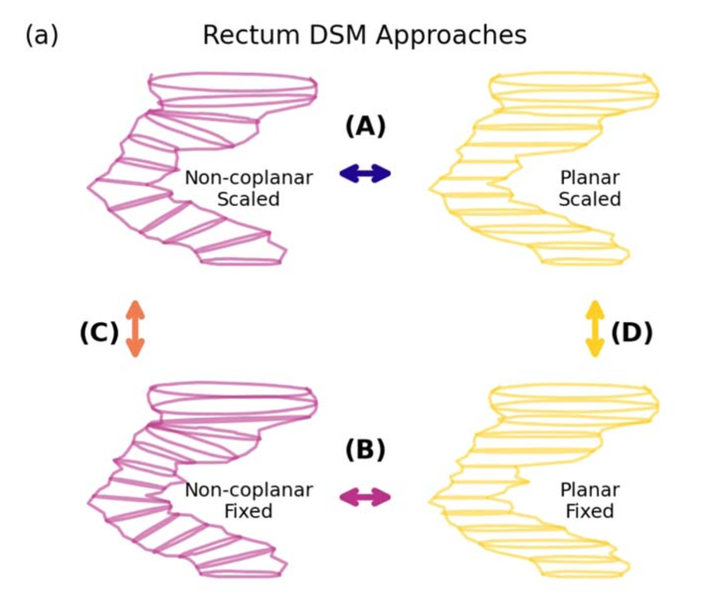More than one way to skin a dose volume: the impact of dose-surface map calculation approach on study reproducibility
 Image credit: Haley Patrick
Image credit: Haley PatrickAbstract
Objective. Dose-surface maps (DSMs) provide spatial representations of the radiation dose to organ surfaces during radiotherapy and are a valuable tool for identifying dose deposition patterns that are predictive of radiation toxicities. Over the years, many different DSM calculation approaches have been introduced and used in dose-outcome studies. However, little consideration has been given to how these calculation approaches may be impacting the reproducibility of studies in the field. Therefore, we conducted an investigation to determine the level of equivalence of DSMs calculated with different approaches and their subsequent impact on study results. Approach. Rectum and bladder DSMs were calculated for 20 prostate radiotherapy patients using combinations of the most common slice orientation and spacing styles in the literature. Equivalence of differently calculated DSMs was evaluated using pixel-wise comparisons and DSM features (rectum only). Finally, mock cohort comparison studies were conducted with DSMs calculated using each approach to determine the level of dosimetric study reproducibility between calculation approaches. Main results. We found that rectum DSMs calculated using the planar and non-coplanar orientation styles were non-equivalent in the posterior rectal region and that equivalence of DSMs calculated with different slice spacing styles was conditional on the choice of inter-slice distance used. DSM features were highly sensitive to choice of slice orientation style and DSM sampling resolution. Finally, while general result trends were consistent between the comparison studies performed using different DSMs, statisitically significant subregions and features could vary greatly in position and magnitude. Significance. We have determined that DSMs calculated with different calculation approaches are frequently non-equivalent and can lead to differing conclusions between studies performed using the same dataset. We recommend that the DSM research community work to establish consensus calculation approaches to ensure reproducibility within the field.